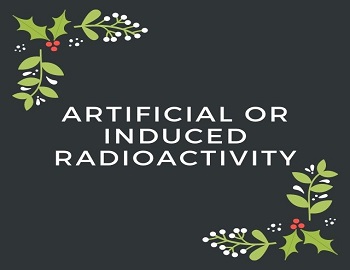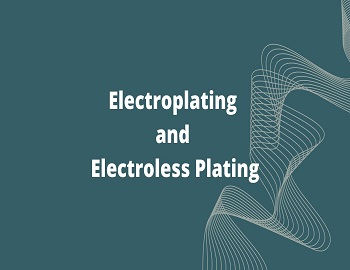Artificial or Induced Radioactivity:
In 1934, I. Curie and F. Joliot discovered that when Aluminium (Al), Magnesium (Mg), or Boron (B) nuclei were bombarded with α-particles, protons, neutrons and positrons were emitted simultaneously. After the removal of the α-source, the emission of neutrons, and protons stopped, but the emission of positrons (+1e0) continued. The continued emission of positrons was explained as follows-
The stoppage of the emission of neutrons and protons after the removal of the source of α-particles indicates that the neutrons and protons were released in the transmutation reaction. The continued emission of positrons indicates that the positrons are emitted from some radioactive daughter nuclide formed in the transmutation reaction.
This observed phenomenon was termed artificial or induced radioactivity. Thus, artificial or induced radioactivity may be defined as follows-
“The production of a radioactive nuclide from a stable, non-radioactive nuclide by transmutation is called artificial or induced radioactivity”.
Thus, the artificial or induced radioactivity may be considered as a process by which a new radioactive isotope of an element can be prepared. In such a reaction, the bombarding particle is absorbed by the target nucleus, producing an unstable radioactive nucleus. Such an unstable nucleus behaves as an artificial radioactive element with a characteristic half-life.
| 13Al27 + 2He4 ———–> [15P30] + 0n1 ; 15P30 ———–> 14Si30 + +1e0 12Mg24 + 2He4 ———–> [14Si27] + 0n1 ; 14Si27 ———–> 13Al27 + +1e0 5B10 + 2He4 ———–> [7N13] + 0n1 ; 7N13 ———–> 6C13 + +1e0 |
It may be noted that the artificial radioactive isotopes do not always lose positrons but can also disintegrate by losing β-particles or other particles as well. Some examples are-
| 11Na23 (Stable Nucleus) + 1H2 (Deutron) ———–> [11Na24] (Radioactive Isotope)+ 1H1 —Disintegrate——–> 12Mg24 (Stable) + -1e0 (β-particle) 13Al27 (Stable Nucleus) + 0n1 ———–> [11Na24] (Radioactive Isotope)+ 2He4 —Disintegrate——–> 12Mg24 (Stable) + -1e0 (β-particle) |
Features of Artificial Radioactive Isotopes:
- It exhibits behaviour similar to natural radioactive elements and follows the same rate law with regard to their disintegration.
- Natural Radioactivity is shown by elements with high atomic numbers (>83) whereas artificial radioactivity can be induced in elements with low atomic numbers.
- It generally has short half-life periods.
- They are very rarely found in nature because they decay off as soon as they are formed due to short half-life periods.









Comments (No)